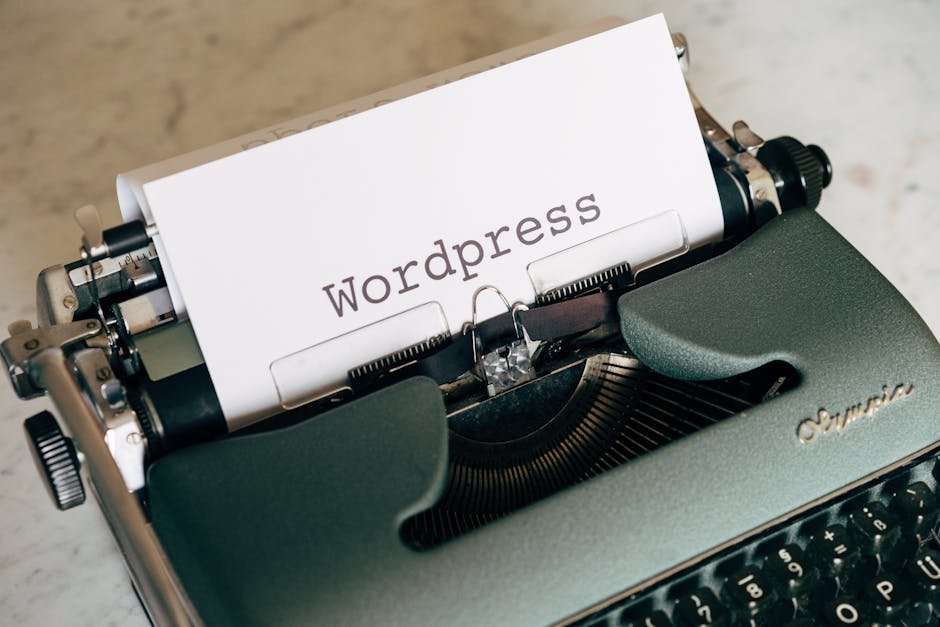Creating a WordPress Content Calendar for Consistent Blogging
Blogging consistently can be a daunting task, especially if you’re juggling multiple responsibilities. However, with the right tools and strategies, you can streamline your blogging process and keep your content flowing smoothly. One essential tool for any blogger is a content calendar. In this blog post, we’ll explore how to create a WordPress content calendar to ensure consistent blogging. Whether you’re a seasoned blogger or just starting out, these tips will help you stay organized and productive. 📅✨
Table of Contents
1. Why You Need a Content Calendar
2. Setting Your Blogging Goals
3. Choosing the Right Tools
4. Step-by-Step Guide to Creating Your Content Calendar
5. Maintaining Consistency with Your Calendar
6. Conclusion
7. FAQs
Why You Need a Content Calendar
Before diving into the how-to, let’s discuss the why. A content calendar is not just a planner; it’s a strategic tool that can significantly enhance your blogging efforts. Here’s why a content calendar is a must-have:
1. **Organization**: It helps you keep track of your blog topics, deadlines, and publishing dates, ensuring you never miss a post.
2. **Consistency**: By planning ahead, you can maintain a regular posting schedule, which is crucial for building and retaining your audience.
3. **Strategy**: A content calendar allows you to align your blog posts with your business goals, marketing campaigns, and seasonal themes.
4. **Efficiency**: With a well-organized calendar, you can batch-create content, saving time and reducing last-minute stress.
Setting Your Blogging Goals
Before creating your content calendar, it’s essential to define your blogging goals. Ask yourself:
1. What do I want to achieve with my blog? (Increase traffic, generate leads, build a community, etc.)
2. Who is my target audience?
3. How often can I realistically commit to posting new content?
Having clear goals will guide your content creation and ensure that your efforts align with your overall objectives. 🏆
Choosing the Right Tools
Several tools can help you create and manage your WordPress content calendar effectively. Here are a few popular options:
1. **Trello**: A versatile tool that uses boards, lists, and cards to organize tasks. It’s perfect for visual planners.
2. **Google Calendar**: A simple yet effective tool that integrates seamlessly with other Google apps.
3. **CoSchedule**: A powerful content calendar tool specifically designed for bloggers and marketers.
4. **WordPress Editorial Calendar Plugin**: A plugin that allows you to see all your scheduled posts and easily drag and drop them as needed.
Choose a tool that fits your workflow and preferences. 🛠️
Step-by-Step Guide to Creating Your Content Calendar
Now that you’ve set your goals and chosen your tools, it’s time to create your content calendar. Follow these steps:
1. **Brainstorm Content Ideas**: Start by listing down potential topics that align with your blogging goals and audience interests.
2. **Plan Your Content Mix**: Include a variety of content types (how-tos, listicles, interviews, etc.) to keep your blog engaging.
3. **Schedule Your Posts**: Decide on the frequency of your posts and assign dates to each topic. Be realistic about your time commitments.
4. **Incorporate Important Dates**: Mark important dates and events relevant to your niche, such as holidays, product launches, or industry events.
5. **Allocate Time for Promotion**: Plan when and how you’ll promote each post to maximize reach and engagement.
6. **Review and Adjust**: Regularly review your calendar and adjust as needed based on performance and feedback.
Maintaining Consistency with Your Calendar
Consistency is key to successful blogging. Here are some tips to help you stick to your content calendar:
1. **Set Reminders**: Use reminders and alerts to keep yourself accountable and ensure you meet your deadlines.
2. **Batch Write**: Dedicate specific times to write multiple posts at once, which can help you stay ahead of schedule.
3. **Stay Flexible**: While consistency is crucial, it’s also important to remain flexible and open to adjusting your calendar as necessary.
4. **Monitor Analytics**: Keep track of your blog’s performance to understand what works and make data-driven adjustments to your calendar.
Conclusion
Creating a WordPress content calendar is a game-changer for bloggers striving for consistency and efficiency. By setting clear goals, choosing the right tools, and following a structured approach, you can streamline your blogging process and focus on producing high-quality content. Remember, a content calendar is not just about scheduling posts; it’s about creating a strategic plan that aligns with your objectives and resonates with your audience. Happy blogging! 🎉
FAQs
Q: How often should I update my content calendar?
A: It’s a good practice to review and update your content calendar at least once a month to ensure it aligns with your current goals and audience preferences.
Q: Can I use a content calendar for social media posts?
A: Absolutely! Integrating your blog and social media content calendars can help you maintain a cohesive online presence and maximize your content’s reach.
Q: What if I run out of content ideas?
A: Regularly brainstorming, staying updated on industry trends, and engaging with your audience can help generate fresh content ideas. Don’t hesitate to revisit and update popular past posts too! 🔄
Q: Is it okay to deviate from my content calendar?
A: While consistency is important, it’s perfectly fine to adjust your calendar when necessary. Whether it’s a trending topic or a last-minute opportunity, flexibility can be beneficial. 😊














